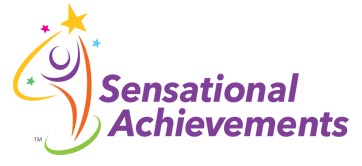Does handwriting impact the learning process in school? Absolutely! With handwriting becoming obsolete after learning to write in Kindergarten the focus on written communication in school has been for students to become more proficient with the keyboard. With the COVID Pandemic, children rushed full speed into a digital world, some of them missing out on key developmental opportunities to build writing foundations. But is there a link between handwriting and educational development which is lost when only using keyboarding?
In an article in The New York Times by Maria Konnikova (June, 2014) called “What’s Lost as Handwriting Fades” the author writes, “children not only learn to read more quickly when they first learn to write by hand, but they also remain better able to generate ideas and retain information.” Konnikova reports that Stanislas Dehaene, a psychologist at the College de France in Paris stated that “when we write, a unique neural circuit is automatically activated. There is a core recognition of the gesture in the written word.”
Konnikova also cited a study by Virginia Berninger, a psychologist at the University of Washington, of children grades two- five and found “when … children wrote by hand, they not only consistently produced more words more quickly than they did on the keyboard, but expressed more ideas.” Also, the same study showed that, “when these children were asked to come up with ideas for a composition, the ones with better handwriting exhibited greater neural activation in areas associated with working memory and increased overall activation in reading and writing networks.”
So what is this neural activation that occurs with motor activities? It’s called PRAXIS!
Praxis is the ability of the brain to generate an idea, plan, sequence, and execute motor actions to reach a desired goal. Praxis development provide the foundation to generate new ideas using visual imagery and representational thought, as well as the cognitive ability to problem solve and plan into the near future. Although handwriting appears to be a relic in this day and age of keyboards and technology, it is a very important skill that should not be forgotten about if you want children to critically analyze, think, and come up with new solutions. Writing is a motor sequence which provides our bodies the kinesthetic feedback for our body to learn the motor plan, execute the motor task, and come up with new ideas to write. For example, when we first start to learn to write, our fingers learn to form around the pencil and manipulate the object. Children’s hands learn the properties of the pencil in order to use it in a functional way. As their hands develop finger coordination, control, and dexterity this allows for the more precise movements with the pencil. This developmental process allows their brains begin to develop new pathways to start generating new motor ideas with a pencil for drawings. Then the pre-writing motor plans become more refined from making scribbles, to lines, to shapes. This eventually leads to handwriting to form letters, and eventually form words into sentences. The brain begins to develop visual images or representations when learning new writing patterns such as with shape and letter formation. The final step is the development of executive function with writing skills which incorporates reasoning, problem solving, and working memory in order to plan and execute more complex writing activities. When there is a gap in the foundation, the act of writing becomes aversive, no matter how creative a child it. This not only impacts their ability to show what they know through written expression but also the brain activation and development that occurs during the writing process, with all the tactile, visual, and proprioceptive experiences a child needs to enhance the formation of memory and retain information.
Handwriting should not become obsolete, in fact, handwriting is a very important skill that needs to be honed and used throughout life. Therefore, when handwriting becomes a challenge it is not always the best option to eliminate and default to using technology to make the activity more successful. By eliminating this everyday task, the pathways to the brain that are formed when a child learns a new skill continue to not be developed.
If you are noticing any handwriting deficits with your child it is suggested to seek out a professional who can help identify the underlying challenges. There is a great deal to gain from handwriting.
Written by: Michelle Cardone-Bunker, OTR/L and Update by Aubrey Schmalle, OTR/L
Photo Credit: https://www.bettefetter.com/category/handwritinghelp/page/2








